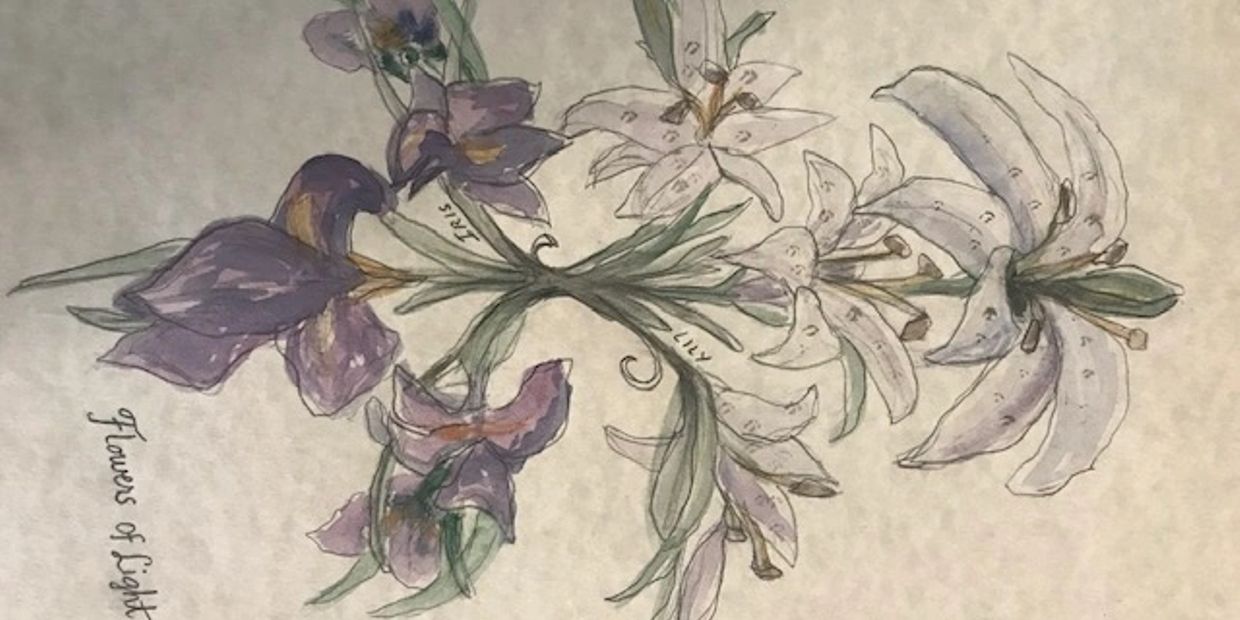Le Fleur de Lis

Knowledge is Power
Le Fleur de Lis - as an emblematic symbol, depicting a stylized Lily, we encounter the inscription in many parts across the world.
Essentially the symbol of fecundity and royalty in ancient Egypt, it also represents the sacred plant and the Tree of Life, embraced with the same symbolical meaning by the Persians and Assyrians from whom it was introduced to Byzantium, in order to arrive at last in the Teutonic countries bordering the East. It appeared in the same period to the Venetians, the Lombards, the Spanish, and the French.
The Fleur de Lis was highly regarded as an emblem of enlightenment and an attribute of the Lord during the Middle Ages. It is the earliest symbol of royalty since ancient times.
As an emblem, its foundation is an inverted triangle representing water; above it is a cross - representing 'Conjunction,' and spiritual union - with two additional and symmetrical leaves, wrapped around the horizontal arm; the central arm is straight and reaches up heavenwards, the symbolism signifying the axis which connects heaven and earth.
In pre-Columbian portrayals of crowned gods and kings, engraved with the symbol of Fleur de Lis, they are often related to a World Tree or Tree of Life, and fruit of immortality.
Moreover, all Mesoamerican kings or rulers were associated with the Tree of Life linked in both the Old World and New World with the trefoil symbol; we see the Fleur de Lis depicted as an emblem.
From the Orient of China, India, and Tibet to the Occident of Mesoamerica, Le Fleur de Lis was highly regarded as a symbol of divine immortality.
In both hemispheres, the symbol we acknowledge as the Fleur de Lis is associated with the mythological deities of the serpent, feline, and gigantic bird, all of which are connected with the Tree of Life and the trinity/ triad of creator gods.
A representation of Fleur de Lis appears in a mural scene from Feathered Conches Temple in Highland Mexico's ancient town of Teotihuacan.
The parallelism between the use, reverence, and portrayal of sacred mushrooms in Mesoamerican heritage and the worship in the Rig Veda of the Vedic-Hindu God-plant Soma is discussed extensively.
Soma is both a beverage and a god. Soma is the Vedic god who went down from the heavens and revealed himself in the form of a plant of immortality.
Even though the real identity of Soma has been obscured over time, Soma has been defined as a god and a "celestial liquor" guarded by a serpent.
An Assyrian depiction from (722 BC-705 BC) portrays an Assyrian king wearing a helmet crowned with the Fleur-de-lis emblem, symbolizing divinity and Lordship and a trinity of gods.
The symbolism of the number 3 encoded in the branches of the Fleur de Lis regarded as an esoteric symbol of immortality and divine resurrection.
The representation for "plant," meaning "Tree of Life" in ancient Egypt, was the lotus lily, a symbol in the shape of a trefoil, and as like the Amanita muscaria mushroom, it is also an emblem that represents eternal life and spiritual resurrection.
Louisiana Lilies
Copyright © 2019 Louisiana Agriculture Preservation Society - All Rights Reserved.
Powered by GoDaddy Website Builder